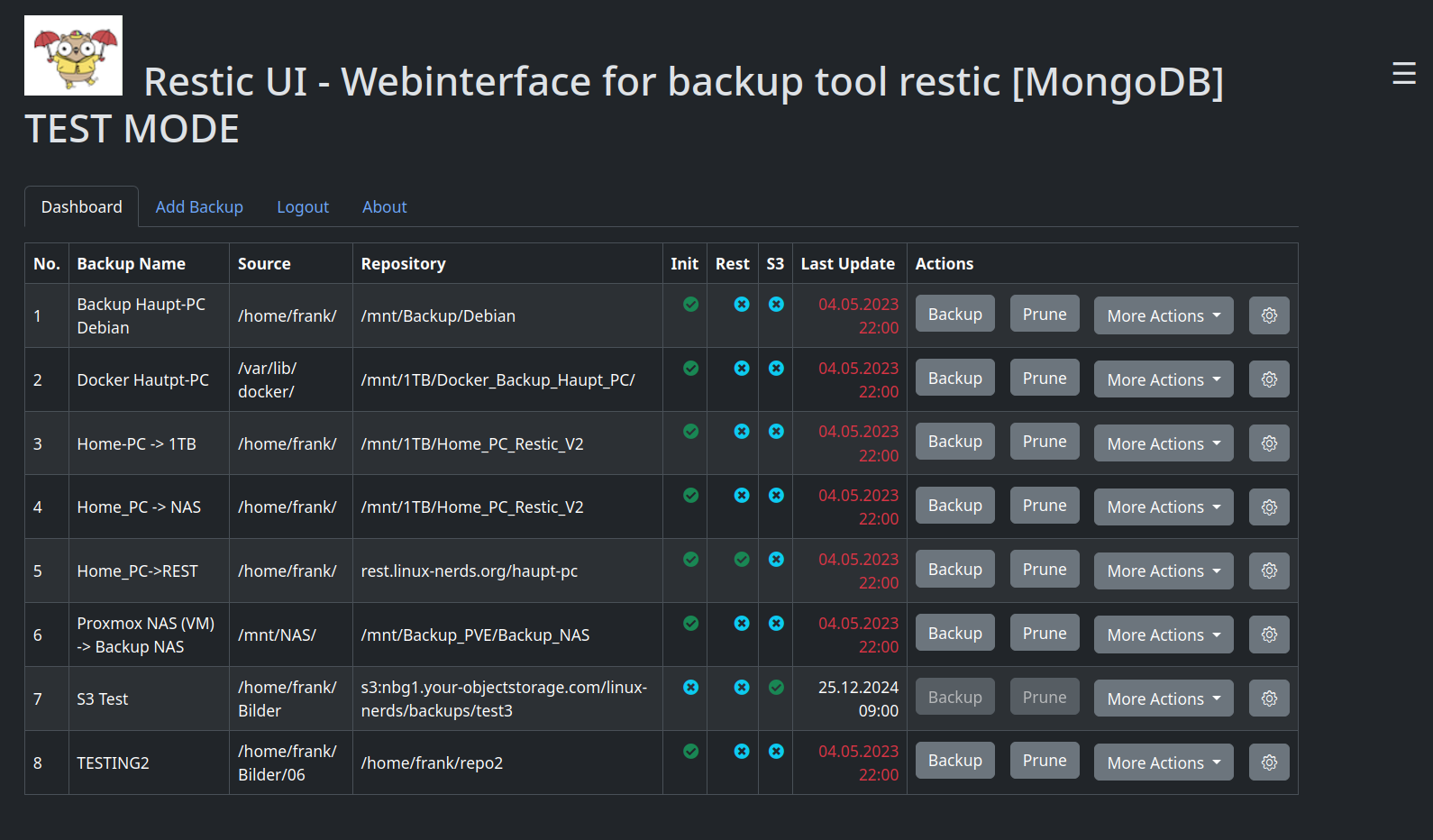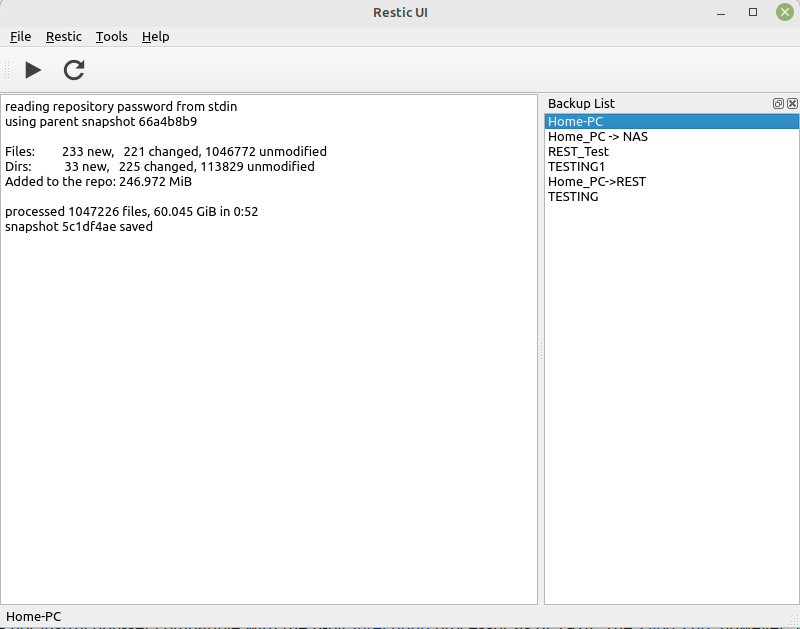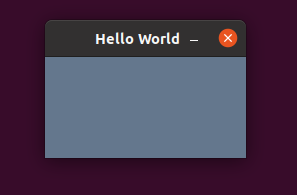Ich habe den Sonntag mal genutzt um ein wenig was einzubauen. Einmal habe ich mit datatables.net die Tabelle etwas funktionaler gestaltet.
[image: 1736705735786-00a95363-1f41-4bbf-884a-34f21aea81e4-grafik.png]
Man kann nun suchen, sortieren und wenn man mehr als 10 Datenpunkte hat, hat die Tabelle auch Pagination. Ein nettes Projekt, macht einiges einfacher
Das nächste, ich hatte es im Video ja kurz erwähnt, mir fehlte ja noch die Restore Funktion von Restic. Ok, ist jetzt auch drin.
Da die Benutzerverwaltung mittlerweile komplett eingebaut ist, werde ich demnächst meine Test Datenbanken und alles was damit zu tuen hat, aus dem Code entfernen. Brauch ich jetzt nicht mehr. Habe jetzt zwei Benutzer, einen Produktiven und einen zum Testen.
Langfristig steht auch noch eine zweite Sprache auf dem Zettel. Aber, dafür muss ich Lust haben, das Thema juckt nicht so richtig
 F FrankM hat dieses Thema am angepinnt
F FrankM hat dieses Thema am angepinnt


